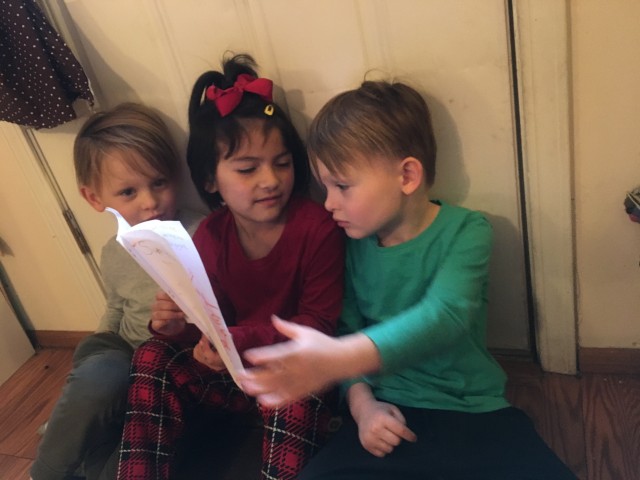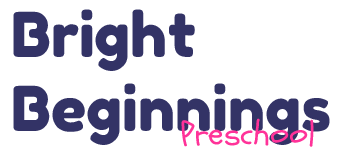We Are Authors
We Are Authors
Written language is acquired by children in many of the same ways they acquire oral language. Two crucial aspects of learning oral language are having opportunities to be a language user and having adult role models.
We can engage children in the exploration of written language by reading with them. Written communication is tied to reading. For the family who enjoys books, many opportunities will present themselves for book projects.
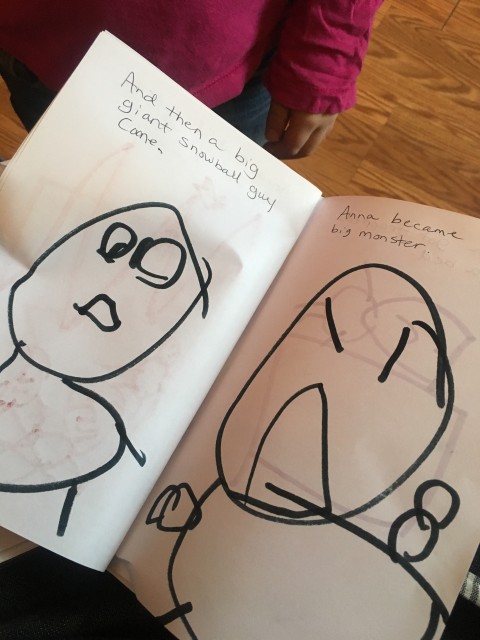
Today I really needed to engage two of our children in fine motor practice that I hoped would lead to practice writing. They love to tell stories and have great imaginations. They also love to draw. I thought maybe writing a book might intrigue them.
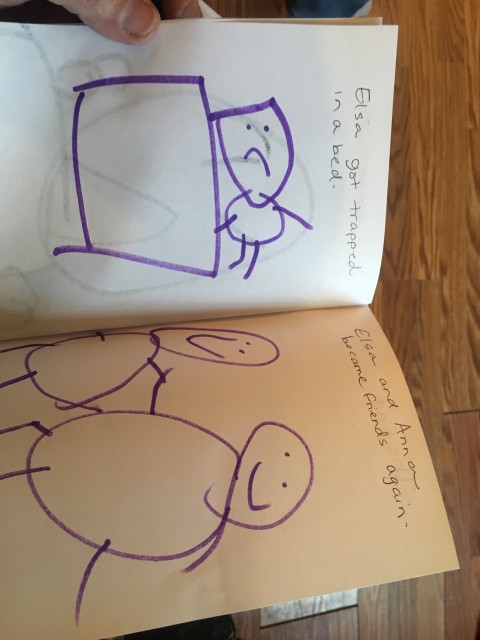
As I waited for these two children to be ready to join me other children noticed what I had going on and asked could they write a story. It became a big story writing extravaganza. 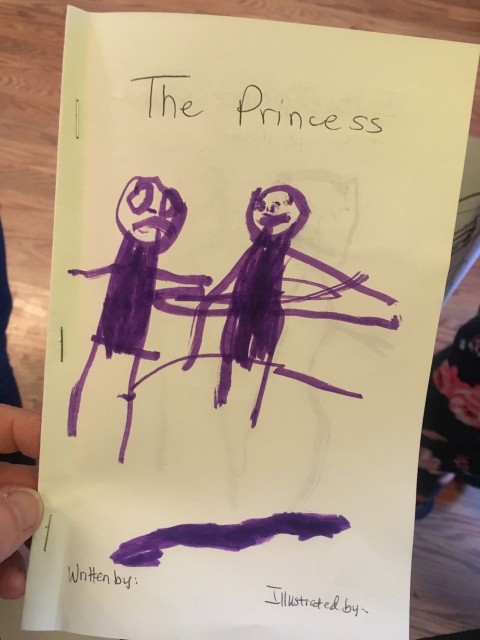 You can do this at home too. Discuss with the child what the book will be about, how big the book should be, and who will be included in the book. This is also a great way to teach those terms that are so ridiculous at kindergarten assessment such as what is an author, what is an illustrator, where is the spine of the book and where is the title? I’m not sure why a kindergartner would need to know this coming into school but we will play that game. I do think our school system has changed their assessment plan and these things might be left off now. That’s what I was told ! Yea !! For Northside ! Anyway, these terms come up naturally if you are writing books with your children.
You can do this at home too. Discuss with the child what the book will be about, how big the book should be, and who will be included in the book. This is also a great way to teach those terms that are so ridiculous at kindergarten assessment such as what is an author, what is an illustrator, where is the spine of the book and where is the title? I’m not sure why a kindergartner would need to know this coming into school but we will play that game. I do think our school system has changed their assessment plan and these things might be left off now. That’s what I was told ! Yea !! For Northside ! Anyway, these terms come up naturally if you are writing books with your children.
To write a book take a few pieces of paper fold them in half and staple the edges. Ask the child what they would like for their book to be about and what they think the title might be. As they tell you the story you dictate their words on the paper. They watch you write . This is helpful in learning letters as well. Today as one of our friends watched me write she said there are a lot of T’s on that page.
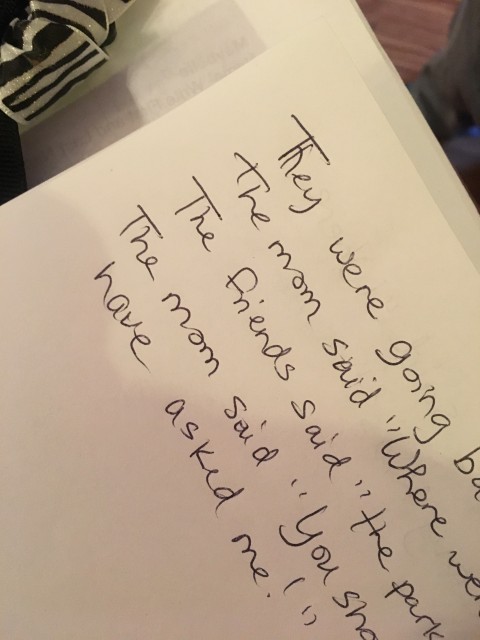 After writing the story you read it back to the child and they can illustrate each page. What usually happens is after every page or so the child comes back and asks what the words on a particular page say so they know what to draw. Brilliant! They now know that print has meaning.
After writing the story you read it back to the child and they can illustrate each page. What usually happens is after every page or so the child comes back and asks what the words on a particular page say so they know what to draw. Brilliant! They now know that print has meaning.
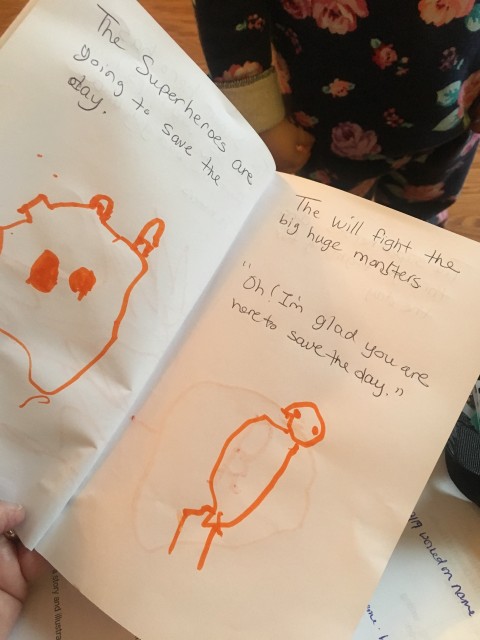
Another opportunity arises when your child makes up a story or tells you about something he did with his class. Perhaps he would like to make the story into a book. If so, he can dictate the words to you or do the writing himself in his own way, whatever that is, and add pictures.

By providing an accepting , encouraging, and stimulating environment, we foster in children a strong self image and a positive attitude toward writing and reading. ❤️
At family time today after I read each child made book they would stand up and take a bow as friends applauded. I wish you could see them beaming with pride.
Other things that went on today –
Remember the story I told yesterday with the props? Today as I promised I put the props and the books on the table at 8:15. At 11 o’clock when we cleaned up they were still children retelling the story or making up their own story with the props at the table. I know three children stayed there for at least an hour engaged.
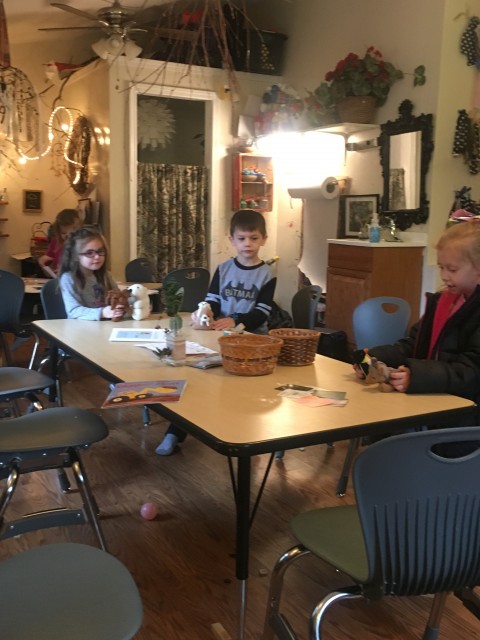
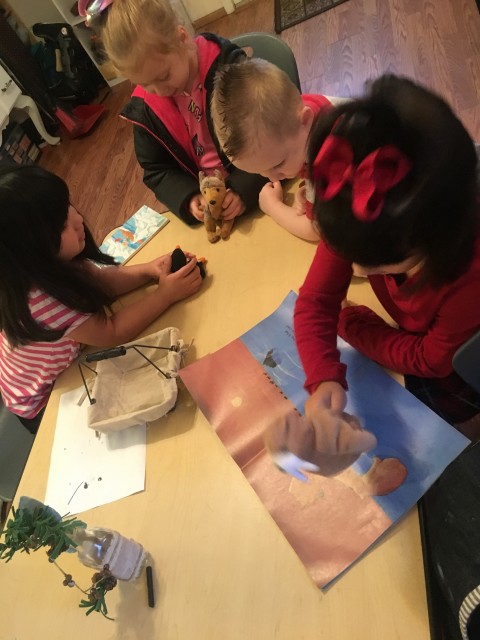
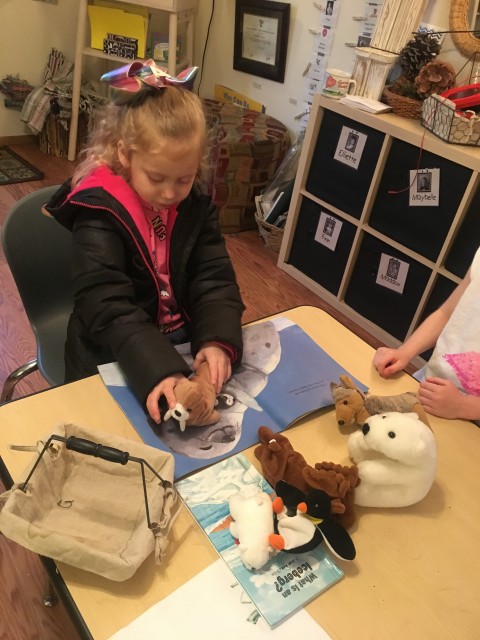
Our lesson plans look quite different from traditional schools. We do not have everyone learning during the week all about penguins or the letter P, or the colors black and white. At parent conference time we all sat down and made goals together for the children. I have taken what parents wanted to see and what I know is appropriate and made goal sheets for each child. I went a step further this week to actually make direct plans that would include those goals for each child. And example would be that during an assessment yesterday while playing a game I noticed that several of our children did not know how to Verbally spell their name. Though I am willing to go to bat for a child not knowing how to read when they go into kindergarten and maybe even not know letter sounds or all of the letters I do think it is quite feasible for children this age to know how to spell their name when asked. Some of them may not be able to write it yet but verbally they can say it. If they can learn all of the lyrics to a popular tune on the radio they can certainly get a few letters strung together. So today we worked on that a little. By working on it I mean in an appropriate way with games or songs or other ways
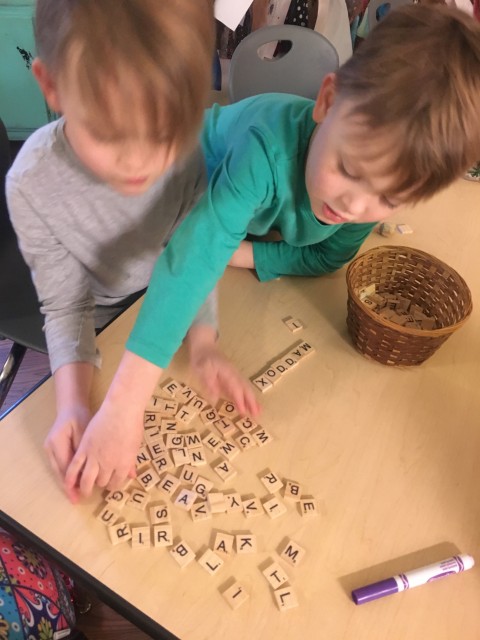
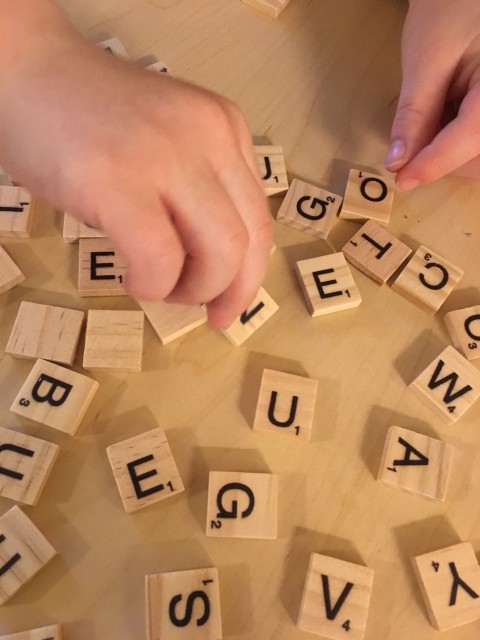 . We will continue to work on it. Also I would like to remind you that this was not done through coercion or long periods of time, we are talking about 2 to 3 minutes.
. We will continue to work on it. Also I would like to remind you that this was not done through coercion or long periods of time, we are talking about 2 to 3 minutes.
It was a pretty full day today but a pretty great one.

